How To Setup A Sleep Friendly Bedroom
Our CEO and senior editor, Marc Anderson, coined the term “Z-Cave” years ago, when customers who had severe sleep disorders would call him after purchasing one of his mattress products, and described what they had done to create their own personal sleep sanctuary.
For years, he kept notes from this rich source of anecdotal information, and then he researched hard science to fill in the blanks, and likely came up with the perfect cake recipe for creating an environment that is calming, sleep-inducing, comfortable, and addictive. To his surprise, there are plenty of people who come to dread their sleep environments because of sleep difficulties rather than embracing their space, and seeking them out with joy when bed time arrives.
“The real problem is not having clear separation from the rest of your home. Often our bedroom is a thru-way to a busy bathroom with your partner walking in and out, kids gathering around bathing parents, or the room is adjacent to media rooms, living rooms, or even kitchens”, says Marc.
He makes it clear that you don’t have to rearrange the floorpan of your home, but that you should do your best to “wall off” your sleep environment with physical as well as imaginary obstacles. He suggests using things like Shoji screens in front of the hallway leading to your bedroom, black out curtains if your bedroom is in evening sun, and instituting rules and regulations for family members or partners about access or behavior when going in and out of bedrooms.
“You need to set the clock so that one hour before bedtime, your sleep chamber, your nest, is a quiet zone, lights should be dimmed, devices turned off, and a calming time introduced to the area.”, he adds.
This means that the first step in creating a sleep sanctuary, or Z-Cave, is creating an element of respect around the space, removing all blue or white screen devices, eliminate excessive lighting, and add creature comforts from paint to pillows to that one, softly glowing lamp, even a white noise generator. Oh, and install a few calming photos or pieces of art to your bedroom can help significantly, too. We’ll get into that below.
Starting With A Mattress, A Z-Cave Takes Shape
Of course, the key element to any sleep sanctuary is the mattress. Since this web site is essentially a mattress review site, we’ll keep this section brief since the rest of the web site goes about the business of helping you find the best possible mattress you can buy. We suggest you check out our Trusted Dealer page if you are trying to narrow down your search for a bed, and we make it easy by offering only a handful of carefully curated retailers rather than hundreds of choices.
Once you’ve purchased the mattress you love, or if you already own the perfect bed, you’re ready to build your sanctuary.
Marc suggests first considering the paint color of your bedroom. “Many bedrooms are painted a color that ties in with the theme of the house, and is not a color that creates a sense of calm, relaxation, and sleep induction. The palette for colors ideal for a bedroom environment is surprising limited”, he offers.
The best colors for a bedroom include blue tones, violet, softer shades of pink, light greens like mint or teal, subtle gray tones, tan, and even white.
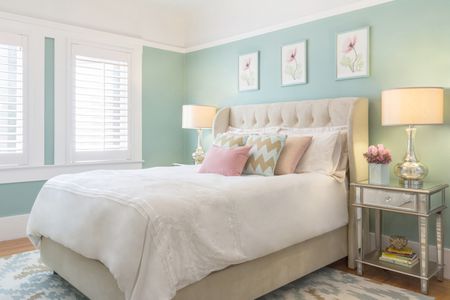
Vibrant colors like reds, dark browns, mustard tones, orange, or strong bright and fluorescent colors should be avoided. Anything which is reminiscent of the sea or the setting sun are desirable tones. These colors calm the mind, and along with a reduction in bright white or blue light, can stimulate melatonin production, essential to the sleep process.
Another thing to consider is the color of your bedding materials. A softer toned comforter, sheets, and pillow cases can also prepare you for sleep. The best example of a bedroom that is properly designed to induce calmness, rest, and promote sleep induction is a well tailored hotel room. Every wonder why a hotel room almost always offers white sheets and bed coverings? It’s because these tones are desirable to the brain. Sheets are one thing, though. Blue/white light from electronic devices do not induce sleep because of the intensity of the stimulation.
Ideally, even your bedroom furniture should follow the feng shui sensibilities that we’re discussing. Furniture painted or stained in soft, soothing tones promote rest and a sense of easiness and safety. Rugs or carpeting that are neutral and soothing, both in color and texture is desirable. The texture of your comforter or top bed spread piece should be crafted from softer, smoother fabrics that have some weight and thickness to them to create a “nest like” sensation.
“I believe that you should design your bed so that it is full, rich, and looks like a nest that you can bury and hide yourself in. The primal parts of our brains encourage to seek out these spaces to sleep”, says Anderson. The visual cues you get when you first walk into your bedroom directly affect how your body switches into sleep mode.
A nest like sleeping space has a level of sumptuousness to it as well. This means perhaps more than one lone pillow, but rather a gathering around you, designed for tucking and wedging. Your pillow, ideally, should be a low profile, or contour pillow, too. Marc Anderson uses one pillow for his head, and one for tucking and wedging.
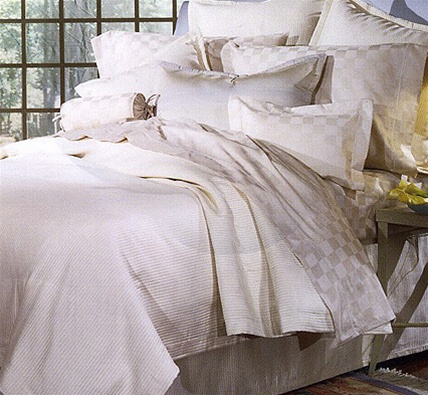
“For years I have used a latex pillow that is low profile, meaning only about 4 inches tall. It is contoured and has one side that is higher than the opposite side. It is scrunchable too, meaning that I can fold one edge under itself to create more height if I need it”, he states.
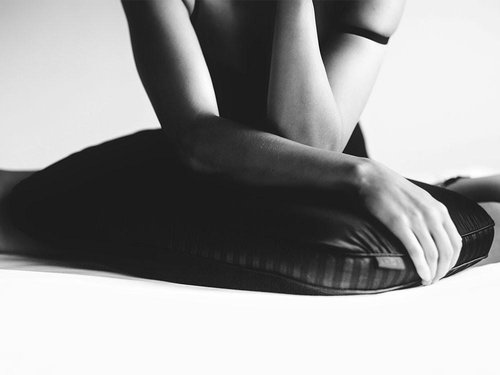
The Night Pillow is designed to stimulate melatonin production with its jet black Mulberry silk and Spandex cover. The covering reduces facial wrinkles, promotes clear skin, and keeps hair shiny, according to the manufacturer.
In fact, many people regard their pillow to be equally as important as their mattress. It should be supportive yet yielding, softer more than firmer, and should be at least somewhat elastic, spongy, and lively. We recommend the Night Pillow, which offers a sumptuous feel and an exterior fabric that can actually help with wrinkles and facial stretch marks, and reducing compression on the face.
Lighting A Major Factor In Creating Ideal Z-Cave
The next obvious step in the process of creating a Z-Cave is the lighting, and we’re not just talking about that lone fixture above you. All light sources in your room must be considered. Even alarm clocks, night lights, seeping natural light, and artificial light from adjoining rooms should be eliminated.
People often wake up in the middle of the night to do things like turning their digital alarm clock around, turning off a hallway light, or shutting down devices. All of these are nuisance factors that trick the brain into thinking that it’s daytime, and can keep you in a perpetual state of lighter sleep, rather than in deeper REM stages of sleep where true, restorative rest that heals the body and mind takes place.
Best bet: have a long light fixture, preferably a dimmable lamp that you can turn down so that the light is similar to dusk, thereby stimulating the brain to follow normal sleep cycles, which will in turn calm you naturally, and relax your body. Turn off your overhead light, which directs light directly into your eyes, and use a lone, downward directed light source that creates the best glow effect you can create.
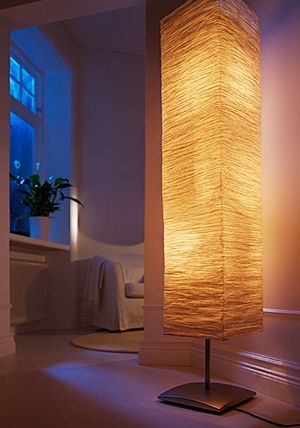
Eliminate Background Noise: A White Noise Generator
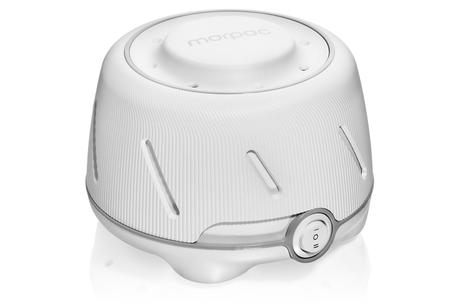
A white noise generating machine that works mechanically without any digitized sounds. Using a spinning fan, it is ducted to create an adjustable “whooshing” sound that is pleasing and effective at drowning out background noise. Our partners at Marpac Sleep Machines even have a white noise machine that has an app you control remotely.
Much research has been done about background noise, and because living in urban environments constantly produces a hum of undesirable noise, from car horns, traffic, industrial noise, noisy neighbors, and barking dogs, many people are deeply affect by the inability of the body to enter REM sleep, where restorative rest occurs, and where the body detoxifies itself and repairs organ systems and grows everything from T-cells to new neurons.
The best way to eliminate the background noise element is to use a white noise machine. “I still use a unit I purchased from Radio Shack ages ago”, says Anderson, describing the one setting that truly helps him to nod off.
“It has a distant train sound, rumbling across tracks. It’s rhythmic, soft, and soothing”, he adds, describing how not having the device either with him on travel, or when power goes out, completely interrupts his sleep routing.
Using a white noise generator, especially a simple, non-digital model that spins a fan to create a whooshing sound is astonishingly beneficial. You can check out our Merch page, where you’ll find a model that we really love. Drowning out the background noise also helps you to rapidly fall asleep. “If you create an environment with multiple cues that help with sleep induction, it can be more powerful than prescription sleep aids or supplements”, Marc Anderson says.
Habits And Rituals Play A Strong Supporting Role In Sleep, Too.
Much like a golfer, who swings a few times before teeing up to the ball, or a manicurist, who lines up her tools and feathers them with her fingertips before beginning, ritualistic behavior causes the mind to empty itself of suffocating and distracting thoughts, and prepares the brain to engage in an activity it has been programmed to learn and execute.
Rather than scroll endlessly through your phone as it pours blue light into your brain, skim a magazine or a book. The ritual act of running it through your fingers engages the mind and sparks it to perform a task, that is, falling asleep.
Declutter Your Space: How Disorganization Stresses Your Brain
Some research suggests that clutter, or even the appearance of disorganization and disheveled objects can create physical stress for some people, and you may not even be aware of it. Elevated cortisol levels are linked to anxiety and restlessness, which can prevent you from being nodding off, which feeds upon itself, creating a constant level of stress upon entering your sleep space.
Remove unwanted or unnecessary objects, and come up with a minimalistic style for your Z-Cave, so that your brain is not occupied with unraveling the level of chaos you place around your nest.